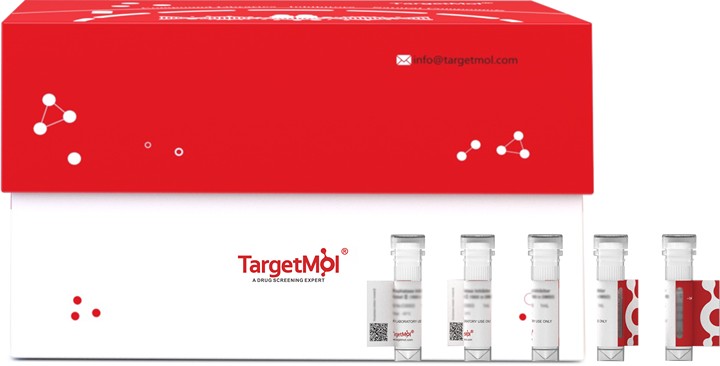 您的购物车当前为空
您的购物车当前为空
Triosephosphate isomerase Protein, Human, Recombinant (His)
一键复制产品信息Triose-phosphate isomerase, also named Triose-phosphate isomerase, TPI and TIM, is an enzyme that catalyzes the reversible interconversion of the triose phosphate isomers dihydroxyacetone phosphate and D-glyceraldehyde 3-phosphate. TPI has been found in nearly every organism searched for the enzyme, including animals such as mammals and insects as well as in fungi, plants, and bacteria. However, some bacteria that do not perform glycolysis, like ureaplasmas, lack TPI. TPI plays an important role in glycolysis and is essential for efficient energy production. TPI deficiency is an autosomal recessive disorder and the most severe clinical disorder of glycolysis. Triose phosphate isomerase deficiency is associated with neonatal jaundice, chronic hemolytic anemia, progressive neuromuscular dysfunction, cardiomyopathy and increased susceptibility to infection and characterized by chronic hemolytic anemia.

Triosephosphate isomerase Protein, Human, Recombinant (His)
一键复制产品信息| 规格 | 价格 | 库存 | 数量 |
|---|---|---|---|
| 5 μg | ¥ 693 | 6-8日内发货 | |
| 10 μg | ¥ 1,170 | 6-8日内发货 | |
| 20 μg | ¥ 1,860 | 5日内发货 | |
| 50 μg | ¥ 3,470 | 5日内发货 | |
| 100 μg | ¥ 4,930 | 5日内发货 | |
| 200 μg | ¥ 7,350 | 5日内发货 | |
| 500 μg | ¥ 12,100 | 5日内发货 | |
| 1 mg | ¥ 17,300 | 5日内发货 |
产品信息
| 生物活性 | Activity has not been tested. It is theoretically active, but we cannot guarantee it. If you require protein activity, we recommend choosing the eukaryotic expression version first. |
| 产品描述 | Triose-phosphate isomerase, also named Triose-phosphate isomerase, TPI and TIM, is an enzyme that catalyzes the reversible interconversion of the triose phosphate isomers dihydroxyacetone phosphate and D-glyceraldehyde 3-phosphate. TPI has been found in nearly every organism searched for the enzyme, including animals such as mammals and insects as well as in fungi, plants, and bacteria. However, some bacteria that do not perform glycolysis, like ureaplasmas, lack TPI. TPI plays an important role in glycolysis and is essential for efficient energy production. TPI deficiency is an autosomal recessive disorder and the most severe clinical disorder of glycolysis. Triose phosphate isomerase deficiency is associated with neonatal jaundice, chronic hemolytic anemia, progressive neuromuscular dysfunction, cardiomyopathy and increased susceptibility to infection and characterized by chronic hemolytic anemia. |
| 种属 | Human |
| 表达系统 | E. coli |
| 标签 | N-6xHis |
| 蛋白编号 | P60174 |
| 别名 | Triose-Phosphate Isomerase,Triosephosphate Isomerase,TPI1,TPI,TIM |
| 氨基酸序列 | Met1-Gln249 |
| 蛋白构建 | Met1-Gln249 |
| 蛋白纯度 | Greater than 95% as determined by reducing SDS-PAGE. (QC verified) |
| 分子量 | 30 KDa (reducing condition) |
| 内毒素 | < 0.1 ng/µg (1 EU/µg) as determined by LAL test. |
| 缓冲液 | Supplied as a 0.2 μm filtered solution of 20 mM Tris-HCl, 1 mM DTT, 10% Glycerol, pH 8.0. |
| 存储 | Lyophilized powders can be stably stored for over 12 months, while liquid products can be stored for 6-12 months at -80°C. For reconstituted protein solutions, the solution can be stored at -20°C to -80°C for at least 3 months. Please avoid multiple freeze-thaw cycles and store products in aliquots. |
| 运输方式 | In general, Lyophilized powders are shipping with blue ice. Solutions are shipping with dry ice. |
| 研究背景 | Triose-phosphate isomerase, also named Triose-phosphate isomerase, TPI and TIM, is an enzyme that catalyzes the reversible interconversion of the triose phosphate isomers dihydroxyacetone phosphate and D-glyceraldehyde 3-phosphate. TPI has been found in nearly every organism searched for the enzyme, including animals such as mammals and insects as well as in fungi, plants, and bacteria. However, some bacteria that do not perform glycolysis, like ureaplasmas, lack TPI. TPI plays an important role in glycolysis and is essential for efficient energy production. TPI deficiency is an autosomal recessive disorder and the most severe clinical disorder of glycolysis. Triose phosphate isomerase deficiency is associated with neonatal jaundice, chronic hemolytic anemia, progressive neuromuscular dysfunction, cardiomyopathy and increased susceptibility to infection and characterized by chronic hemolytic anemia. |





 |
|